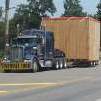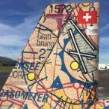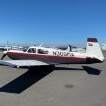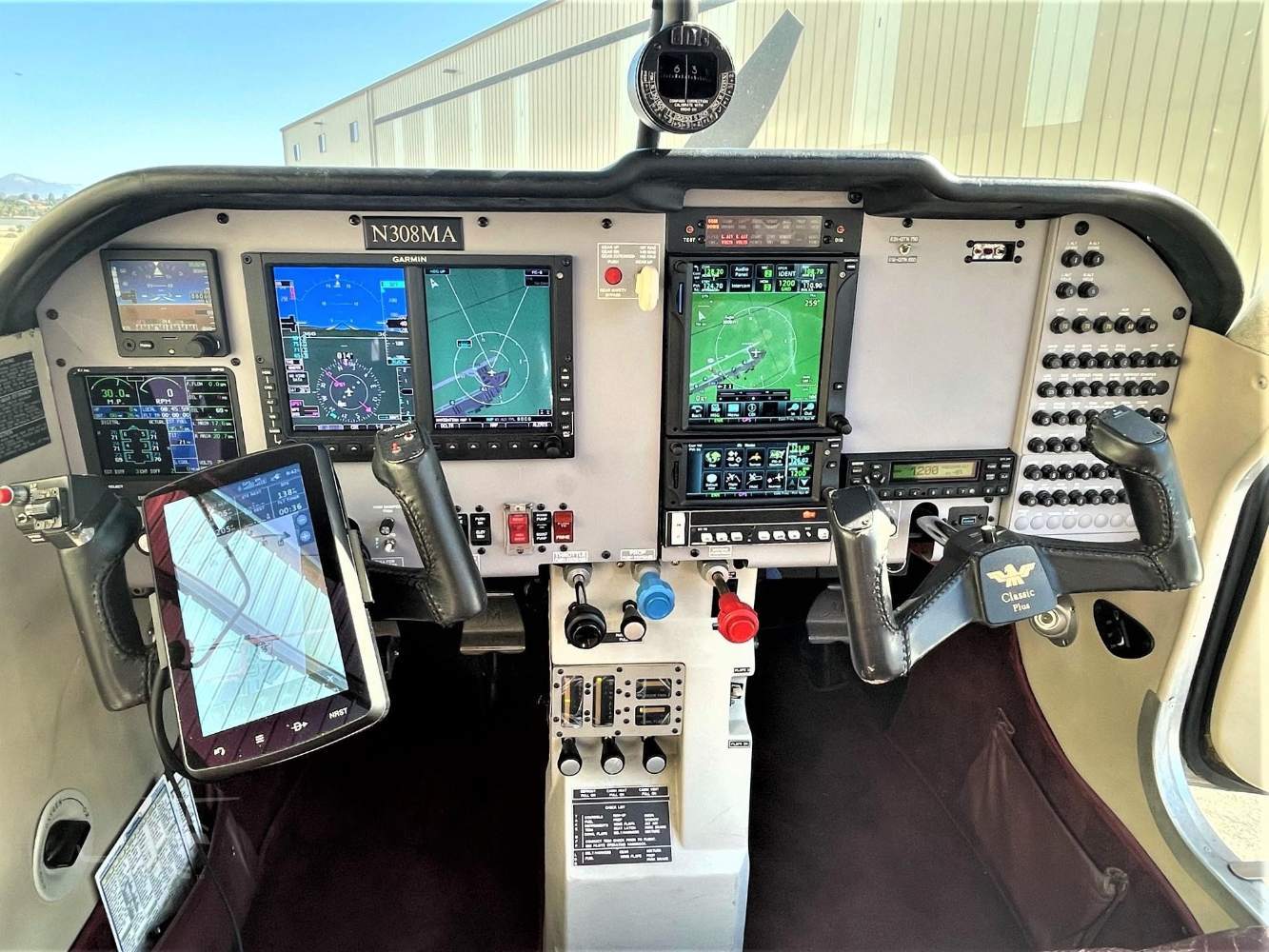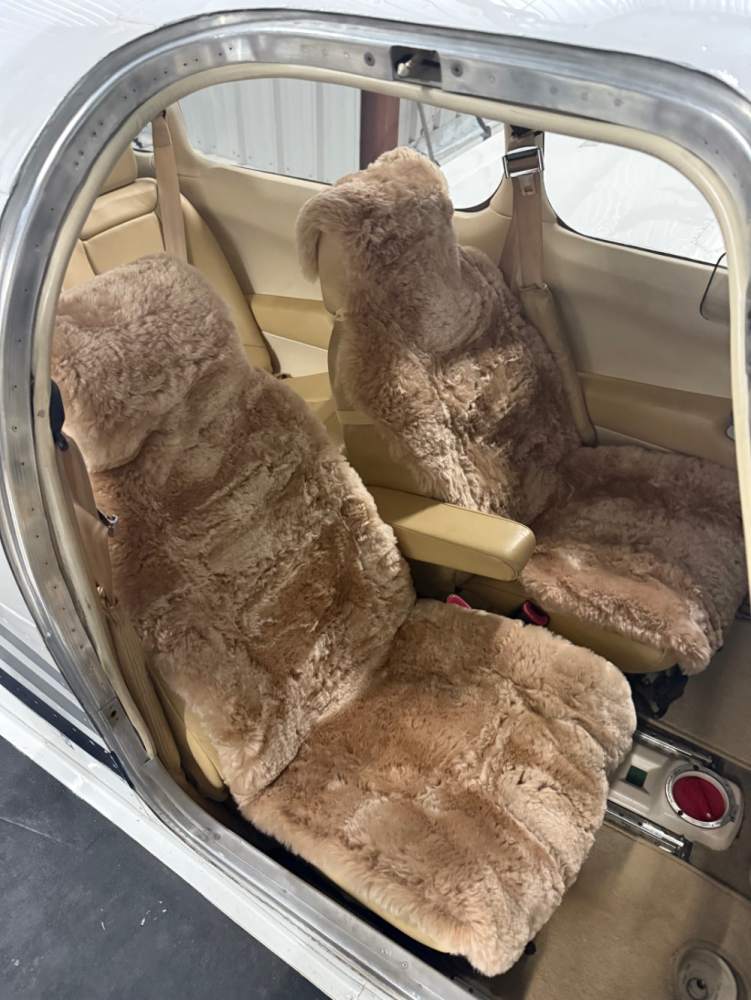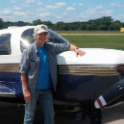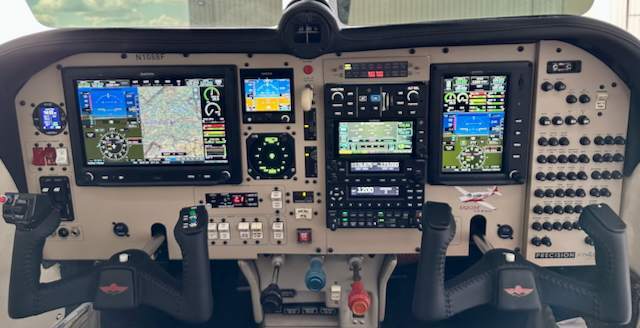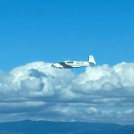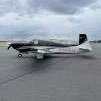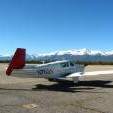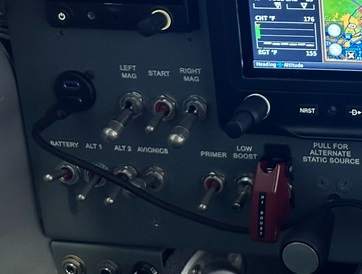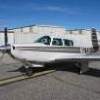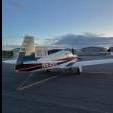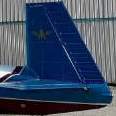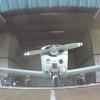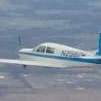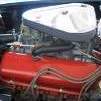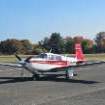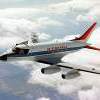Leaderboard
Popular Content
Showing content with the highest reputation on 12/01/2024 in all areas
-
4 points
-
2 points
-
You are likely correct, but you never get everything back that you put into it... You get enjoyment and utility in return, but not every nickel back when you sell it. Any 175k J that you see from the 70s likely has far north of 200k put into it if first bought at retail and improved by someone over time. You can try to be patient and wait for one to hit the market with everything you want at a lower price, but you might be waiting for a long time when you could've been flying sooner and improving whatever you buy. That's a trade off only you can decide to make. Sent from my motorola edge plus 2023 using Tapatalk2 points
-
+1 about sitting in the aircraft and thinking about ergonomics. Since you're going with the G3X and from the looks of it will be going with integrated engine monitor, how you set up your screen will move the GDU460 left or right if you try to line up PFD with yoke...this may give you more or less room on the left or right of the screen. This makes me recall the legacy G500 and the PFD was fixed on the left side which put the knob and buttons offset center of the yoke. Regardless of having an Aera on the yoke it was awkward reaching between the horns of the yoke with every heading change, baro change, GPSS, etc. I also previously had the ESI500 (standby -- G5 wasn't approved then) and the engine monitor on the left. BEFORE: AFTER: With my panel upgrade, we changed the engine monitor and G5 to the right and the PFD is centered on the yoke with the G500TXi PFD on the right, MFD on the left. I've found I VERY MUCH prefer the way my panel is set up now. Both knobs on the G500TXi are to the outside of the yoke horns, PFD is still aligned with the yoke, having the MFD on the left almost gives you an easy to refer to map/weather/etc while easy to scan beside you. I found that I like the PFD on the right rather than the left, as I fly with my left hand and this frees up my right hand to adjust baro, change heading, etc with the right. Previously I'd have to change hands and then adjust with my left hand with legacy G500. I also really like my current G5 location now as it's easy to scan and high in the visual field; plus it's right between the path between the GMC507--G5--G500 PFD when I'm checking the "score board" to confirm mode changes when adjusting autopilot. I much prefer the engine monitor data to the right of the G500 as well. It seems right out in center and easier to use overall. Also in the scan line going from PFD to radios which means I glance at the temps, oil pressure/temp, etc. more frequently than I did when it was on the left. My copilot can more easily see all the screens as well. As mentioned before, where you put the GMC507 (top of radio stack vs bottom) is a personal preference and that's something that ideally you should sit in a cockpit with both and see what seems more ergonomic for you. Personally, with my set up I like having the GMC507 at the top as it's more lined up with the G5 and scoreboard on the G500, is more "heads up" position, and most button pushes in the radio stack are all around the same location since I have the GTN750 with remote audio so I typically control both radios from the top of the GTN touch screen. My panel was copied on @donkaye both previous and my current panel. When I purchased the aircraft it had the Aera 796 installed and I found that having a yoke mount was MUCH faster to move between all the screens faster and easier. I sold the 796 and upgraded to a 760 when I updated the panel. I typically have this in traffic screen around the airport, use it for weather investigation, use it for approach chart, use it to change/mute the XM radio on the panel, and it just allows me to have multiple screen views at once. I find that with remote radio control from the G500/GTN750/GTN650 that I typically don't use the GTN650Xi screen much except for default nav so I always have track/dtrk, eta's, etc. easy to reference. Also regarding TOGA button, make sure you put it in a position that's not easily unintentionally pressed. I flew with a buddy who had it down low and it accidentally got activated in flight one time (maybe his knee bumped it?). It was a good WTF moment to practice holding the AP disconnect on the yoke and having me pull the AP breaker while confirming what happened. I have mine kinda above the throttle that's in a position that I can reach with my thumb with hand on the throttle, but just a slight angle so that it has to be intentional. As an aside, my shop put the AP breaker on the bottom left breaker position and I collared it with red collar. Easy to find in dark and easy to tell copilot where to find it. Smart Glide I put at the top by the ELT. Seems like those go hand in hand and easy for me to instruct a copilot to locate and press if needed. In general, there are a lot of commonalities between pilot to pilot regarding ergonomics; but some things are setting it up the way YOU want it so that your panel is efficient for how YOU fly. A little thought and planning goes a long way to make your panel intuitive not just for you but for others.2 points
-
Last summer I had the Electroair push button installed in my Cirrus. It is great! http://www.electroair.net/switchPanel.html2 points
-
Using an agent is a reasonable idea for a first transaction. But roughly the process can ideally be: Have someone knowledgeable look over the ad and scanned logs to help you affirm that the plane is a good fit for you and reasonably priced. Make an offer along with a proposed contract, unless the seller has a contract. It should spell out the terms of getting an inspection done, who pays for what, how long you have to complete the purchase, whether you'll use an aviation escrow service (hint: it's a great idea), etc. AOPA has an example contract you can find. Arrange a pre-buy inspection done by someone who knows Mooneys but hasn't worked on this one. It should start with a thorough and detailed log book review so you'll know what to look for during the physical inspection. With the log review done, which might reveal some specific items to look at, someone will inspect the plane in-person. You want to pay them by the hour for as little or much time as you both agree it takes to be confident in a go/no-go decision. They'll look for the most-likely deal-breakers first and stop if they find a major concern, so you can evaluate whether to continue or walk away. At the end you want to receive a summary of condition and any problems or concerns that could be expensive or airworthy. You should also receive itemized estimates for any issues that must or should be fixed soon. You'll negotiate with the seller over who will fix, or pay to fix, discrepancies. The escrow service can handle all of the paperwork with the FAA and will disperse money. Or they'll return your money, and you hand the keys back to the seller. In reality it can be difficult to schedule a pre-buy on short notice, but it's very worthwhile and the best money you'll spend. The best money I spent in my own purchase process was on a pre-buy for a plane I ended up walking away from, due to surprises revealed in the inspection process. An annual determines if an airplane is airworthy (even if just barely) today, but says little about tomorrow or next year. You want something very different: guidance on whether you should assume ownership of the plane and all of its potential / developing problems. Nobody has a crystal ball, but they can give you surprisingly-specific advice about what expensive work will likely be required in the coming years. Also keep in mind that once you start an annual, it must be completed. But with a pre-buy inspection, if the mechanic finds a deal-breaker in the first hour (airframe corrosion, metal in the oil filter, surprise damage history, ...), you can stop right there and call the whole thing off. If it's convenient or efficient to also do an annual during the purchase process, go for it. You'll insist that it at least has a current annual. But personally, even if I was buying a plane whose annual expired real soon, I'd first pay someone to spend at least a few hours hands-on looking for deal-breakers before committing to a full annual. My last bit of advice: know what you want, and be ready to move FAST because good planes get a lot of interest. Get on hangar waiting lists right now. Find an insurance agent you like. Pick an aviation escrow service. Start transition training now if you can find a CFI with a Mooney. You want everything lined up in advance and ready to go. When you see an ad of interest, respond right away, and be prepared to get on the phone almost immediately trying to find a shop in the area that can do a pre-buy.2 points
-
I’ve purchased the covers from Aerosheep, and another source in the past, but there were some details that I didn’t quite like. The big one was that they are bulky between the seats and a bit heavier than they need to be. I found these on Amazon and laid them on the seats, marked them for a better fit, and then brought them to an upholstery shop to cut them down and clean them up. They are made for a car seat so they are way too large for our little airplane seats. This worked really well and got both covers for the front seats for less than a third of what one cover from Aerosheep would cost. It is only a top cover for the seat and back, not a full slip cover, but the straps are well located prevent the cover from moving around enough to be a problem. I brought them back to the upholstery shop after I fit them today to fix a strap that had a broken buckle but I will post some pics of them installed when I get them back. $120 for two seat covers, $100 to have both modified by upholsterer. Below is the link, and they are very high quality! https://www.amazon.com/dp/B09DW4HWN5?ref=ppx_yo2ov_dt_b_fed_asin_title&th=11 point
-
1 point
-
Ok you really need to read mike busch books about maintenance and engines. One of the quotes i heard him say is the first 500 hours and last 500 hours are free. By that he means the resale value doesn’t really change as people prefer and put a premium on an engine in the 500 to 1000 hours range. That is because a new engine with no hours on it is statistically more likely to fail than an engine at TBO so people want to see about 500 hours on the engine to feel comfortable that it was put together correctly. Still does not mean it will not fail at 501 hours but the probability goes down with a few hundred hours on the engine. Then there are the people worried at the other end of the spectrum flying past TBO and since for the longest time even now there are people that just know at TBO + xxx the engine will fail. Mike Busch with his years of data and experience pushed his engine 200% plus past TBO with no engine failure. Look at all that free time! He got literally a free extra engine as his went double the normal TBO and saved a huge amount of money. If you base your engine on condition instead of an arbitrary number and let the engine tell you when it’s time to overhaul, you might get lucky or you might have to overhaul sooner but rarely is the case that an engine fails without giving warning signs before the impending doom.1 point
-
Interesting...one guy bought it, installed it, used it, loves it. Another guy, didn't buy it, didn't install it, never used it, and hates it. Love me those 'objective' reviews1 point
-
Unless you are planning on selling it soon, it doesn't matter. What matters is it what YOU want and want to own. With what I paid for my plane and the upgrades, I can't get back what I spent, but I don't care. I am enjoying the heck of it.1 point
-
Don't feel bad...I'm a career EE and I don't know how to troubleshoot an intermittent problem, either!1 point
-
My suggestion would be to get a good thorough prebuy with an independent mechanic and see what they say.1 point
-
Also, what’s good about low time? It’s still a 50 year old airplane. The parts are just as likely to wear out on the ground than in the air (maybe more likely) after 50 years and we don’t suffer from structural fatigue like pipers. My 0.02, total time means almost nothing and it may be worse.1 point
-
Everyone likes their panel design going into an upgrade project. Hours and hours of thought and "what ifs" go in to the layout. I'm no different and I really love how it came out, but there are a few things I would think through differently now that I've had a year to fly behind it. Mine looks quite similar to your plan, accepting the GMC507 location. I'd put the GMC507 where you have yours. I set my panel up so that everything I needed to touch inflight was accessible with my right hand, and I run the G3X split screen most of the time with the EIS and PFD on the left side. I make all my altimeter, altitude and heading adjustments through the G5 and the GMC507 rather than with the left knobs on the G3X. This is easy with the G5 and GMC507 at the top of the panel, but would be even easier if the 507 was under the G3X. I would think more about a clean sheet design on the panel, rather than constraining myself with the standard placement for the radio stack and the gear switch/trim indicators. I would look at moving those switches/indicators and the G5 and the strike finder elsewhere so I could have the radio stack right next to the G3X. This makes it easier to access the GTN650 for the flight plan elements and procedures that don't pass through the G3X for IFR ops. Not a huge deal as it isn't difficult to fat finger the GTN650 in the standard location but it would be easier. In my case I would move my GDU 470 from the right side of the panel and put it next to the GDU460. However, a lot of things have to move around to move the G5, so there are trade-offs. I agree that moving the USB ports to the bottom of the panel is a good idea, unless you're needing to power a portable device on the glareshield. I have the Electroaire mag/start switch panel and really like it. @Pinecone is right, the mag switches have a light and cheesy feel to them compared to mil spec switches but they work and have a decent positive over-center switch function. Some things to consider with the Electroaire as compared to a keyed ignition switch is engine start requires a new habit pattern to make sure you get the second mag on after start, and at shutdown you need to make sure you add a checklist step to confirm you've turned the mag switches off. "Key on the glareshield" isn't a thing anymore. I moved my headset jacks from under the panel up onto the panel on the pilot side to get them out of the way. I found that I kept bumping the plugs with my knee in the original recessed location under the panel and that's why I moved them. A better location would be to move them to the side panel in a recessed housing like in the later model Mooneys. EDIT: Something else we did that required a minor modification to the installation was to put the TOGA button on the left horn of the yoke. We used the CWS button on the King autopilot cluster since CWS isn't available for the certified GFC500. That way both the A/P disconnect button and the GA button are under my left thumb as I approach minimums, and I select the proper one as appropriate. I also used the remote mount Guardian CO detector and interfaced it with the G3X. I get CO values from 0ppm, rather than from 30ppm with the 553 model, and I also get a CAS message and a tone on the G3X if the sustained CO level goes above 50ppm. The CO level is recorded along with all of the other flight and engine data on the G3X data card. And it's one less thing taking up panel space. You might consider putting the compass out of the way on the right side of the panel. You would need it if the whole panel went down, but in normal operation you will never look at it. So consider using the valuable panel space areas for other things. Just as an aside, I understand the DC8 cockpit had the compass located on the back wall behind the pilots.1 point
-
I had a similar issue. Suspects were the gear down switch, wiring, gear down limit switch in the belly , relays, and loose/poor contacts. To make the long story short, it was a hard to find, intermittent problem with the gear down limit switch in the belly that worked perfectly fine on the ground. Driver1 point
-
Relay(s) selector switch, or gear down limit switch (stays stuck from the last operation). Would be my order of attack. I found it helpful to get underneath with someone else working the up down on jacks and really pay attention to how well limit switches are moving. can also tap the relays but beware of a false positive, the tapping vibration could be enough to release anything in the circuit that’s sticking1 point
-
1 point
-
A cap that fits the OEM switch in 70s-era Mooneys is this one: https://www.mouser.com/ProductDetail/690-SW53AA2 But... the problem a lot of people run into is that as those switches malfunction over the years, they are often replaced by shops with a switch that is equivalent in function, but not exactly the same, such that the OEM caps don't fit. There's nothing particularly shady about this - the OEM switches can be hard to find, and are often superceded by other parts. They're also "standard electronic parts", and a reasonable interpretation of the rules allows replacement of simple electrical switches with equivalents that are not exactly the same dimensions. So... your best bet is actually to replace the whole switch, along with caps to match. Perhaps with this one: https://www.mouser.com/ProductDetail/690-SA1BV20, which matches the caps above. Doing so is straightforward if you're handy with a soldering iron (and if there's enough of a service loop left in the wiring, otherwise you have to replace the wire or add extensions). I'll leave the legalities of DIY to others to pontificate on. Word of advice about the caps: either buy a whole bunch of them, or have the gumption to place a drop of CA or plastic glue on the cap when you stick it on the shaft. The caps just press fit onto the switch shaft. They're not particularly secure, and they don't stay in place very long in the cockpit environment. When they come off, they often get lost in the seats, carpet, or down in the bowels of the belly. You can guess how I know this, and it's probably the reason your caps are missing in the first place. I went through my whole stash of caps a while back, and gave up - we're back to just stabbing our thumbs on the tiny little shaft.1 point
-
1 point
-
Between the TKS and old airframe and paint, I don't think I can quite make that. I did it once, but I had tailwinds that were closer to 75KT. We could have our LOP discussion here, but so far I have not been able to make it run LOP without stumbling occasionally. Unfortunately I've been too focused on making the individual flights get from A to B to spend much time actually playing around with it.1 point
-
@bloghill Welcome to the Rocket club!! I've had mine for about 1.5 years and 200 hours and love it. @201Steve I tend to get about 190KTAS on mine. I usually fly at the 72% 'Normal Cruise' power setting, I expect the seller was at the 65% 'Economy Cruise' power setting based on his fuel flow statement. While we can fly faster, the fuel consumption is a lot higher. Much of the time I am either going to Seattle and back, which is relatively short (< 1 hour) and is mostly in the climb or descent so a higher cruise power setting won't make much difference. Or I'm on a much longer XC (2S0 <-> KFFL) where I'm fuel limited and I usually then finesse the fuel flow and power settings to get the range & reserve I want.1 point
-
If you are in the Bay Area, Top Gun aviation at Stockton is a very good shop for Mooneys. They are very busy, but you may be able to get them to look at and give advice on the plane you're looking at.1 point
-
This might be an assumption on my part, but I’m guessing you’re looking for temp and dew point data? I’m a daily user of Windy. The app is fabulous and easy to use. Set the crosshairs on your interest location, adjust the time slider at the bottom, then press ‘sounding’. You can zoom in the chart based upon your altitude interest. I use this app to find altitudes I can reasonably predict I won’t be stuck in a layer my entire flight. I’ve found their data and models to be spot on.1 point
-
Indeed! What a nice piece by Scott Simon. Heartening to see positive news. Better to light a candle than curse the darkness.1 point
-
100% agree with @Pinecone here. Be ready and able to execute. Lots of good advice in this thread for the due diligence part, but when you find the plane that will work, you need to show up with money, insurance, and a qualified CFI or ferry pilot. I was where you are 30-ish years ago, living on the east coast and buying a 231 out of the Bay Area. Paul Loewen at Lake Aerostyling and Repair (now LASAR) in Lakeport, CA, did the pre-buy. Closed the transaction with AIC Title, who I’ve used probably 75-100 times as a dealer and for myself, flew out west with an airline friend / CFII, and had a grand adventure coming back. Definitely connect with @jgarrison, Mark Woods, or Richard Simile. They know the market, and whatever you spend for a buyer’s agent will be dwarfed by the off-market planes they may be able to show you or the disasters they keep you from. Enjoy the adventure. -dan1 point
-
A couple of things. I used @jetdriven to review logs on the airplanes I was looking. He found some deal killers on a couple of them. If you are financing, get everything done before. As in, have the loan approved with the max you can get. When you find the right plane, you can pounce. I was 10 days from first add to closing on the deal. Have some money in the hands of a title/escrow service. I used AeroSpace Reports. That way you can put a deposit on it quickly. Due to having my ducks in a row, I was able to get the plane I have. Any delays, and another buyer may have slid in. And there were others.1 point
-
don't disparage my grandfather. "Right tool for the job" In other news google searches for Stilson Wrench are up by 401 point
-
1 point
-
Learn as much as you can from reading for sale ads and logbooks, Jimmy Garrison is a good resource, contact Savvy, see what they have to offer, establish an upgrade and repair budget on top of the purchase price, on a 25 year old airplane this can be another 20% to 50% of the purchase price to be spent within 2 years, start looking for a hangar, enjoy the ride, the journey is the destination1 point
-
1 point
-
I was originally going to state that it could be D3 or D4, but after looking at the circuit again, if D3 failed, D4 should keep the current from flowing back.1 point
-
Mooneys in general, really--I'm on my third, and they keep getting bigger each time!1 point
-
@dkkim73 Great post! (Oh, just use auto land and you won't go bouncing down the runway)1 point
-
1 point
-
I just added IPA to my tanks and the engine is running terribly. I think it's those new West Coast IPA's with the unreasonable amount of hops and weird aromatic fermentation by-products...1 point
-
There seems to be a great fear and resistance of technology for many members here in a certain age group. its irrational, short sighted, and in the case of a few we’ve seen above, hazardous. as these people age out, lose their medical, and generally go away I think we’re going to see the mentality observed in this thread that “you get fixated on ADSB” will likely go away with it. At least for the practical examples anyway. I’m sure there will be a few stuck to their keyboards telling others what they should and shouldn’t do.1 point
-
1 point
-
The engine starting when you release the key is a signal of a failing left magneto. During engine start, the right mag is grounded, as only the left mag has a set of retarded points used at startup; letting go of the key activates the right magneto and the engine may start then. My left mag died in the air, and after landing neither love nor money would make it start again; not even my enhanced vocabulary made it run.1 point
-
Exactly. The regs, the case law, precedent are nothing but a giant contradiction that you can weave an explanation out of 6 ways from Sunday just like what’s going on here. Rosen sun visors. Hahahaha. Exactly. The regs give us enough leeway to keep our airplanes flying. It’s the arm chair pontificators that keep them grounded. If a sound argument can be made, we should normalize that flexibility instead of self imposing it to be taboo. Still waiting on someone to show me a single example of someone being enforced upon that made sound judgement with fair regulatory citation. Even the idiot David Jewell who pencil whips engine overhauls isn’t being enforced upon and he’s an EGREGIOUS example of taking the loosest possible interpretation of the regs. He built me a motor, handed it back to me with a log entry that said OVERHAULED. no tags, no part list, no inspection reports, no receipts, no 8130s, no nothing whatsoever. “Over-fn-hauled. Sincerely, David Jewell”. So, there are professionals doing extremely idiotic things on a regular basis, you couldn’t beg the FAA to do anything about, and here we are wondering if it’ll be OK to use a new switch or should we use a piece of junk switch out of a wrecked airplane not knowing if it’s ok or not. It’s crazy.1 point
-
Well... I like mine - a lot. Enough that I'm doing a new engine at just shy of 2200hrs now into 12 years of ownership.1 point
-
Seems weird the water would freeze in the flow divider on top of a hot engine and was liquid in the fuel tank. It seems more likely there was suspended ice particles in the fuel that clogged the fuel screen. How did you figure the ice clogged the divider? did you disassemble it on site? If not the evidence goes away.1 point
-
No one ever really gets to that number… I paid more than I should have, but timing was a factor, and most of the big ticket neglected items would have been changed anyway. I knew I was going to get a project for this one, so I’m not going to let this spoil my joy. I would have preferred the seller to be a good guy, but he turned out to be kind of a jerk, which makes the transaction less happy than one would hope. He promised to tank it up for me, I got there and it was less than half full, so he called the FBO and topped off. Then after we closed he said he changed his mind and it was “my problem to pay the FBO”. it wasn’t the $400 that upset me, it was just a crappy move. Oh well, I only had to see him for a few hours, but tomorrow he wakes up and he is still him…. Other than that, I’m very happy to be back in a Mooney, and I’m looking forward to making it better than new.1 point
-
I believe there is one at my home field, KPOC. As I'm hangared, I've never used it in 7 years of ownership; Wash-Wax-All has worked for me without ever needing water1 point
-
@Elijah I think that Gallagher may have replacement parts or can order them. https://www.gallagheraviationllc.com/Whelen-Aerospace-Technologies-Parts_c_154.html Check out these IPC pages and it will help you find the correct PN. I think you've got the A429 strobe (or the A625). So the lens would be either #33 or #41 in the IPC. Knots2U and Aircraft Spruce also have these parts I believe. A429 with the A428 lens? https://www.gallagheraviationllc.com/Whelen-A429-Parts_c_158.html A625 with the A612 lens? https://www.gallagheraviationllc.com/Whelen-A625-Parts_c_164.html If Gallagher can't get you a lens, he can at least sell you a replacement that's far brighter and less current draw than your existing! @OSUAV8TER M20J IPC lights.pdf1 point
-
Aircraft Spruce has a number of replacement lenses. one might fit: https://www.aircraftspruce.com/categories/aircraft_parts/ap/menus/el/strobes_zreplacement.html1 point
-
1 point
-
1 point
-
You have to keep them more than a month to really find out. . . lol Just kidding. Actually the only cylinders I've ever replaced have been on a Lycoming TIO-540-AF1B. I've owned 3 Lycoming powered Mooneys and 4 Contintental powered Mooneys. The only Lycoming Piper I owned (Mirage) was down 9 months due to a crankshaft recall (TIO-540-AE2A).1 point
-
With all the portable products, Im surprise no one has developed a portable version of SS.1 point

